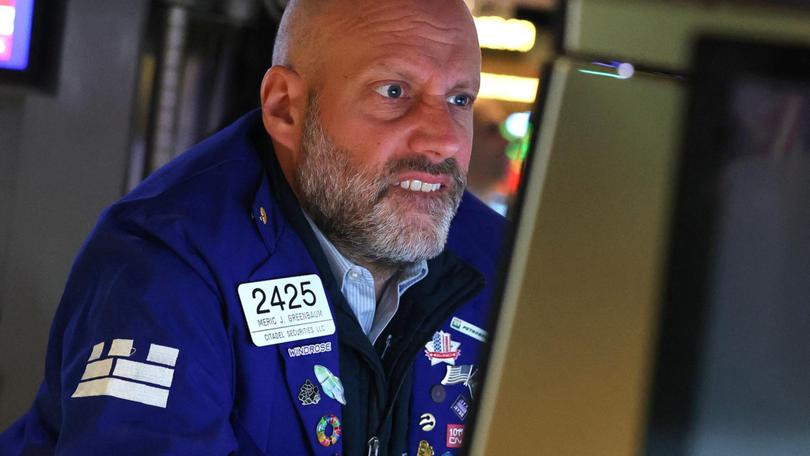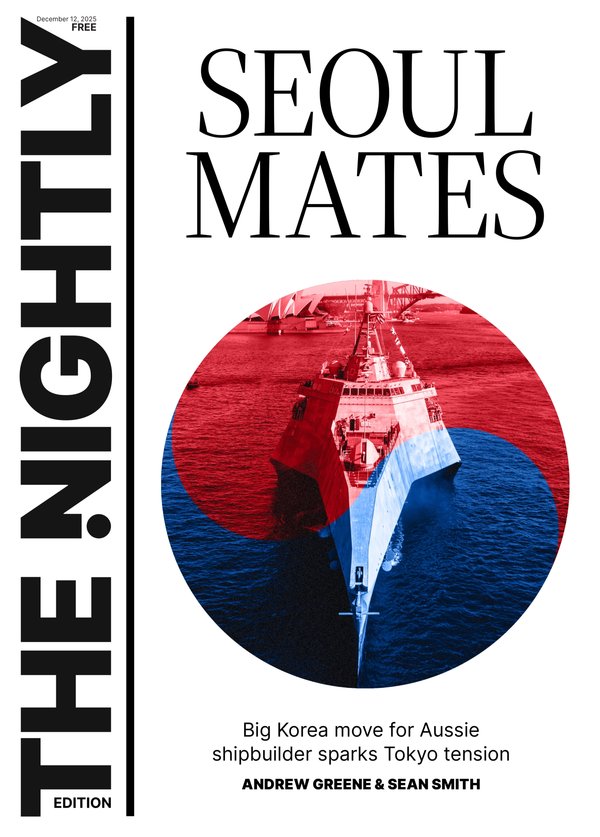ASX market updates: Investors make cautious return after Monday’s tariff-induced horror show

The Australian stock market is staging a cautious rebound after Monday’s horror show handed local investors the worst drop on the S&P-ASX200 since the early days of the pandemic in May 2020.
The index opened higher in the first few minutes of trade and by 10am it was up 1.6 per cent to 7460.1 points.
It closed down 4.23 per cent on Monday as US President Donald Trump showed no sign of rolling back his sweeping global tariffs agenda.
Sign up to The Nightly's newsletters.
Get the first look at the digital newspaper, curated daily stories and breaking headlines delivered to your inbox.
By continuing you agree to our Terms and Privacy Policy.At the close, the S&P-ASX200 had given up 8 per cent in its past five trading days and was off 10 per cent for 2025 so far.
Energy and IT stocks have led the rout over the past week of trading — down 17.8 per cent and 10.6 per cent, respectively.
Miners have also taken a hit, down almost 10 per cent, followed by consumer discretionary stocks at 8.1 per cent.
All of the market’s 11 sectors were in the green, led by IT stocks (up 3 per cent), consumer discretionary (up 2.6 per cent), energy (up 2.5 per cent), and mining and health care (both up 1.9 per cent),
The tentative return to positive territory for local stocks followed a wild ride for US markets overnight as Mr Trump dug in his heels on tariffs, warning he could further increase levies on China.
The S&P 500 and the Dow closed lower after a roller coaster session, with investors worried about an economic slowdown and rising inflation.
Trading volume broke US records for the second session in a row. In early trade, all three major US indexes touched their lowest levels in more than a year. In the morning they briefly rallied sharply on a report about tariffs, only to fall again after the report was knocked down.
Also during the session, the CBOE Volatility Index , Wall Street’s fear gauge, breached 60 points, hitting its highest level since August 2024. After paring gains it still ended the day at 46.98, its highest close in five years.
“The underlying problem of the market is that the administration’s approach to trade imbalances is to try a cure that’s worse than the disease,” said Rick Meckler, partner, Cherry Lane Investments, a family investment office in New Vernon, New Jersey.
“It’s clear that investors favour either a pause or a different look at how to do this. It’s very telling that of the many Trump supporters in the investment and business community, it doesn’t look like there’s anybody stepping up and endorsing the administration’s approach to tariffs.”
The Dow Jones Industrial Average fell 349.26 points, or 0.91 per cent, to 37,965.60, the S&P 500 lost 11.83 points, or 0.23 per cent, to 5062.25 and the Nasdaq Composite gained 15.48 points, or 0.10 per cent, to 15,603.26.
In the first two days following Mr Trump’s “Liberation Day” tariffs announcement last Wednesday, the S&P 500 index had dived 10.5 per cent and lost about $US5 trillion ($8.3t) in market value for its biggest two-day loss since March 2020.
On Friday, the blue-chip Dow confirmed it was in a correction, or more than 10 per cent below its December record close while the Nasdaq confirmed it was in a bear market, defined as a decline of 20 per cent or more below its record close.
In Monday morning trading, the S&P 500 had fallen 20 per cent below its record closing high. The index briefly rallied more than 3 per cent, after a news report said Trump was considering a 90-day pause on tariffs. White House officials quickly denied the report, sending the market back into the red.
“Contrasting tariff messages caused wild swings in equity markets overnight, with European indexes sharply lower,” ANZ analysts wrote in a research note.
“The market briefly thought there would be a 90-day pause on tariff implementation, but this was denied.”
Oil prices have rebounded slightly, but remain at three-year lows as global growth forecasts shrink crude demand expectations, with Brent trading just above $US65 a barrel.
Ongoing uncertainty in markets would likely cause volatility for some time to come, Moomoo market strategist Jessica Amir said.
“Investors that are not into riding roller coasters should sit back until May or June, which is how long US Treasury Secretary Scott Bessent said tariff negotiations could take,” Ms Amir said.
“While they are sitting on a big cash pile, investors need to see certainty before they’ll ‘buy the dip’.”
Gold was down for a third-straight session, losing 2.4 per cent to $US2963.19 an ounce.
The Australian dollar, which has plummeted more than 5 per cent since the Liberation Day” tariffs were announced, is holding above US60¢ after consolidating below the psychological level for most of the night.
The Aussie is buying US60.06¢, down from US60.14¢ on Monday at 5pm.
